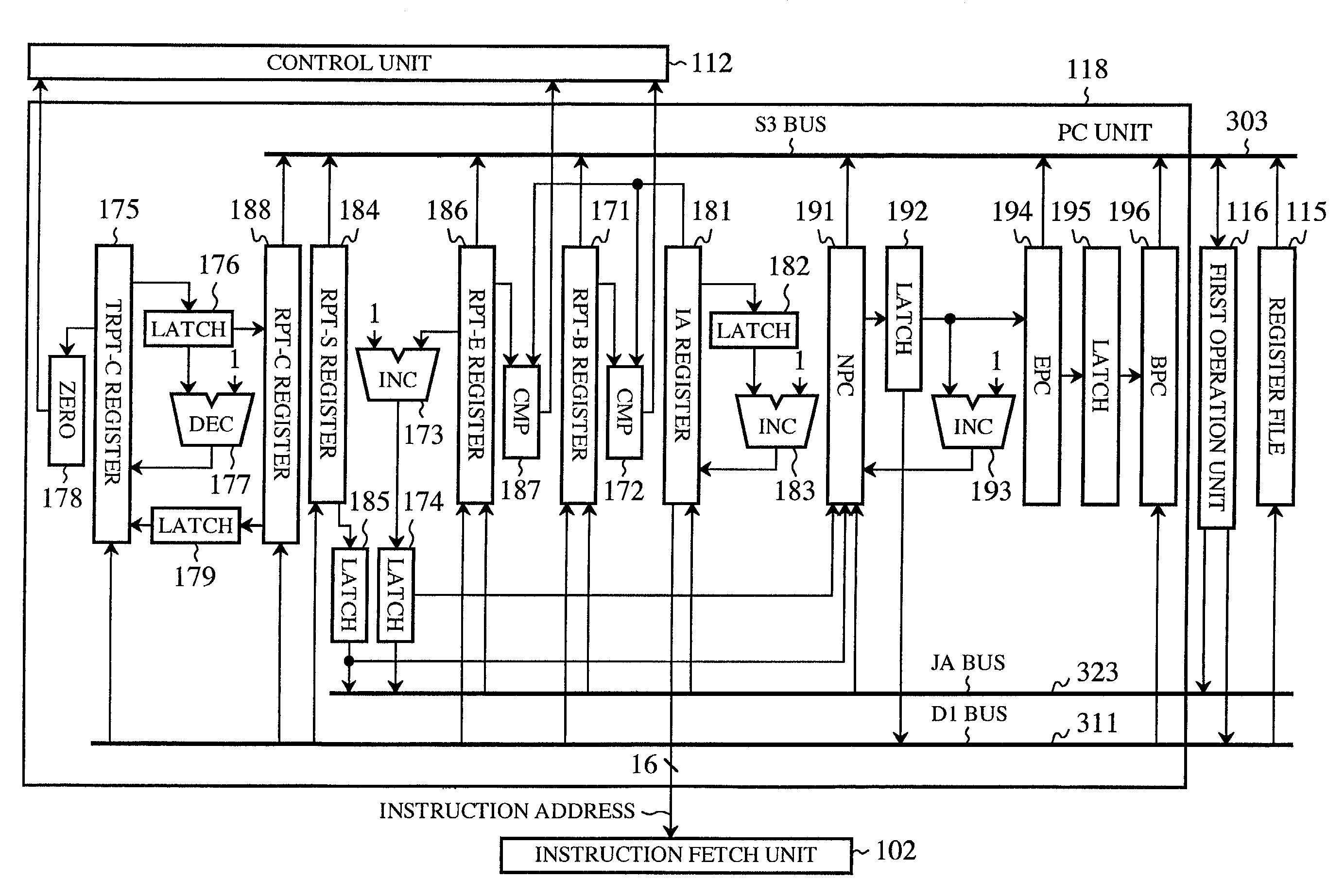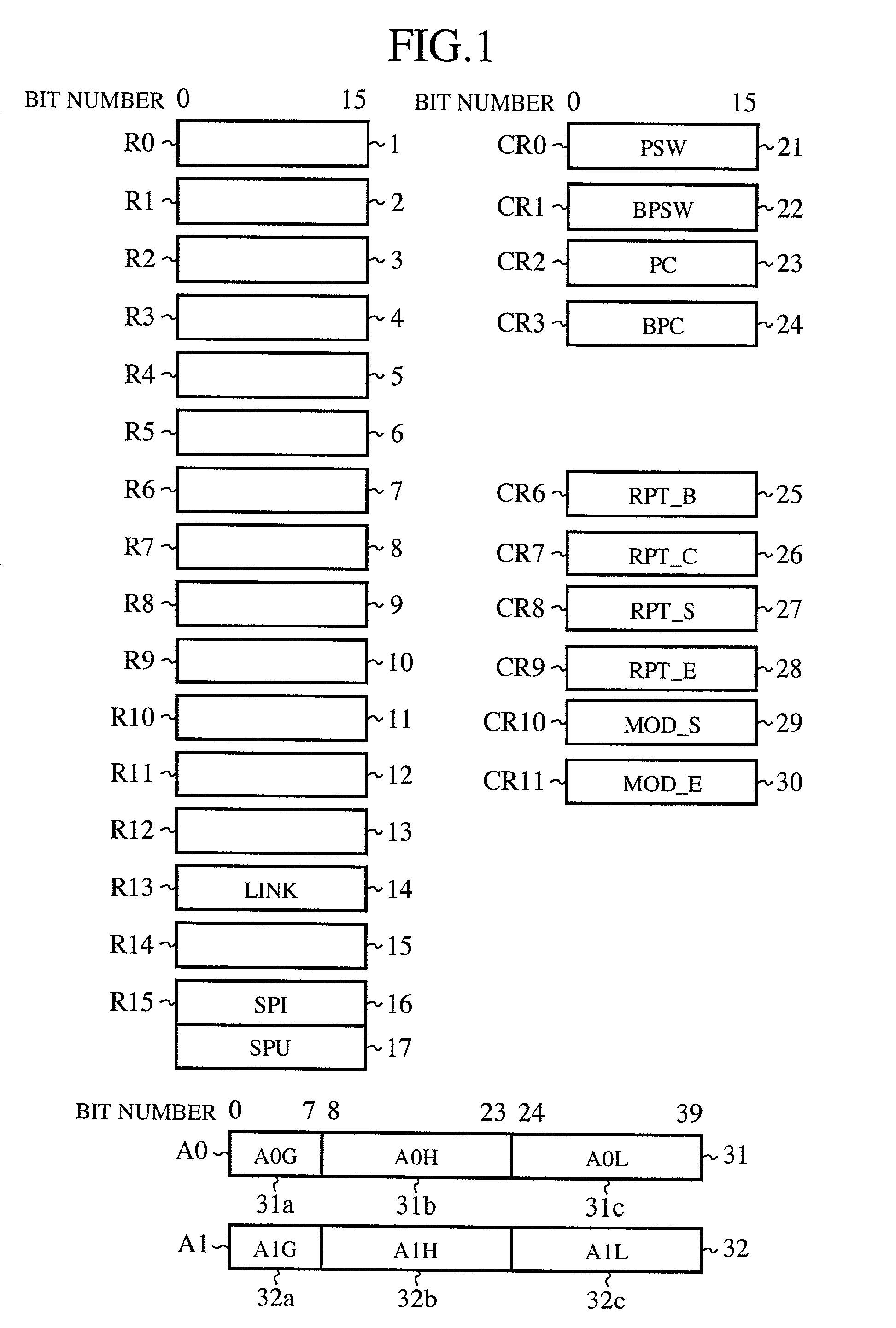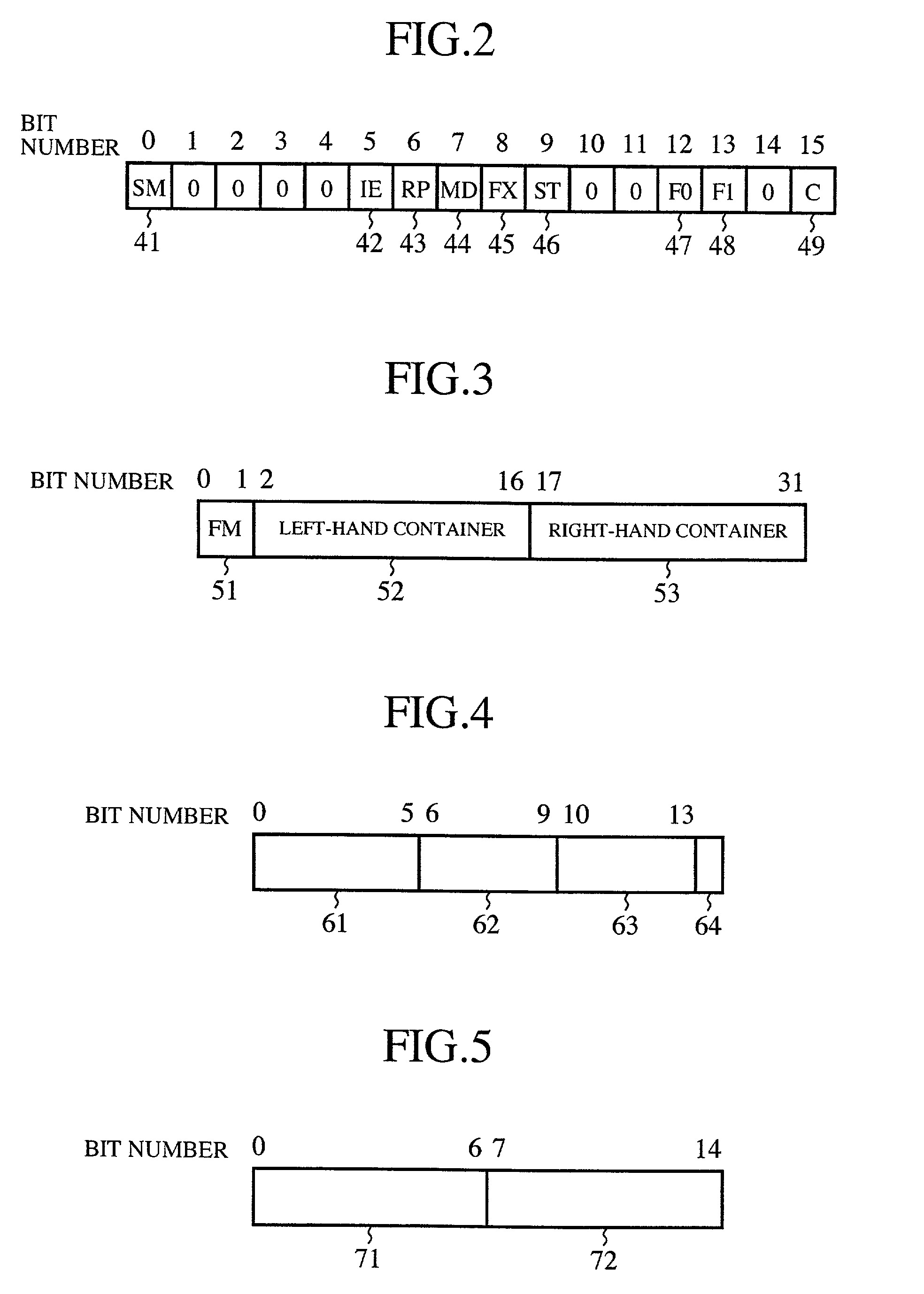Data processor speeding up repeat processing by inhibiting remaining instructions after a break in a repeat block
a data processor and repeat processing technology, applied in the field of data processors, can solve the problems of high program development workload, romed software raises hardware costs, and the program size of repeat processing becomes inevitable large, and achieves the effect of low cost and increased program development efficiency
- Summary
- Abstract
- Description
- Claims
- Application Information
AI Technical Summary
Benefits of technology
Problems solved by technology
Method used
Image
Examples
first embodiment
[0059]FIG. 1 depicts a set of registers for the data processor according to the first embodiment (Embodiment 1) of the present invention. Let it be assumed that the data processor according to the present invention is a 16-bit processor whose addresses and data are 16 bits in length. The data processor employs big endian bit and byte ordering wherein the most significant bit is the bit 0.
[0060]Reference numerals 1 to 15 denote general-purpose registers R0 to R15 for storing data or addresses. The general-purpose R13 is a link (LINK) register for storing a return address for a subroutine jump. The general-purpose register R15 is a register for a stack pointer (SP) including an interruption stack pointer (SPI) 16 and a user stack pointer (SPU) 17. The general-purpose register R15 is switched, by a processor status word (PSW) described later, between the interruption stack pointer (SPI) 16 and the user stack pointer (SPU) 17. The SPI 16 and the SPU 17 will hereinafter be generically re...
embodiment 2
[0186]In a second embodiment (Embodiment 2) of the present invention, after processing of the repeat-processing last instruction, the instruction processing sequence is not switched to the next instruction of the repeat block so as to inhibit the execution of the instruction until the repeat-block last instruction unlike in Embodiment 1. The data processor of this embodiment is basically identical in construction with the data processor of Embodiment 1, and hence no detailed description will be repeated except differences from the latter.
[0187]FIG. 20 illustrates the PSW configuration for use in this embodiment. The PSW in this embodiment differs from the counterpart of Embodiment 1 in the inclusion of an RE bit 601. When it is “1”, the RE bit 601 indicates that the instruction until the last instruction of the repeat block is being processing after the processing of the last instruction of the repeat processing. That is, the RE bit 601, when set at “1”, indicates that the repeat pr...
embodiment 3
[0201]In a third embodiment (Embodiment 3) of the present invention, the processing of the repeat-processing last instruction is followed by switching the instruction processing sequence to the next instruction of the repeat block in the E stage 403, but not in the IF stage 401. The data processor of this embodiment is basically identical in construction with the data processor of Embodiment 1, and hence no detailed description will be repeated except differences from the latter.
[0202]The PC unit 118 in this embodiment has the same construction as depicted in FIG. 10.
[0203]Next, the operation of this embodiment will be described below.
[0204]The following description will be given of operations in the case of executing the program depicted in FIG. 16. FIG. 23 is a timing chart showing pipeline processing during the execution of the program depicted in FIG. 16. FIG. 23 corresponds to FIG. 18. The parts corresponding to the clock cycles T1 to T9 are identical with those shown in FIG. 1...
PUM
 Login to View More
Login to View More Abstract
Description
Claims
Application Information
 Login to View More
Login to View More - R&D
- Intellectual Property
- Life Sciences
- Materials
- Tech Scout
- Unparalleled Data Quality
- Higher Quality Content
- 60% Fewer Hallucinations
Browse by: Latest US Patents, China's latest patents, Technical Efficacy Thesaurus, Application Domain, Technology Topic, Popular Technical Reports.
© 2025 PatSnap. All rights reserved.Legal|Privacy policy|Modern Slavery Act Transparency Statement|Sitemap|About US| Contact US: help@patsnap.com



